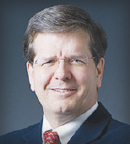Recent articles in JAMA Oncology focused on lung cancer and screening strategies. Apar Kishor Ganti, MD, MS, of the University of Nebraska Medical Center, Omaha, and colleagues provided updated data on non–small cell lung cancer (NSCLC) incidence, prevalence, and stage through 2017.1 Sylvia K. Plevritis, PhD, of Stanford University, California, and colleagues evaluated the cost-effectiveness of the 2021 U.S. Preventive Services Task Force (USPSTF) lung cancer screening recommendations and screening strategies that modify components of the recommendations.2 In an editorial accompanying the two studies, James L. Mulshine, MD, and Bruce Pyenson, FSA, MAAA,3 of the Center for Health Aging, Rush University Medical Center, Chicago, stressed the need for widescale uptake of screening and posit mechanisms for accelerating uptake.
Closer Look at NSCLC
In their study, Ganti et al1 analyzed data on NSCLC incidence, prevalence, and stage using data from the U.S. Cancer Statistics database for 2010 to 2017, comprising the Surveillance, Epidemiology, and End Results (SEER) program and the National Program of Cancer Registries (NPCR) from the SEER-18 database.
Based on the SEER-NPCR data, a total of 1.28 million new -NSCLC cases occurred during 2010 to 2017, with cases per 100,000 population decreasing from 46.4 to 40.9 from 2010 to 2017. Based on the SEER-18 data, the incidence of stage II, IIIA, and IIIB disease was stable between 2010 and 2017, whereas the incidence of stage IV disease decreased from 21.7 to 19.6 of 100,000, and the incidence of stage I disease increased from 10.8 to 13.2 of 100,000. The Centers for Medicare and Medicaid Services (CMS) implemented the decision to cover low-dose computed tomography (CT) screening in 2015, late in the study period, and uptake of screening has been slow thereafter.

Apar Kishor Ganti, MD, MS

Sylvia K. Plevritis, PhD
Given these considerations, the investigators attributed the increase in stage I incidence to increased evaluation of incidental pulmonary nodules detected outside of the screening setting, encouraged by the benefits of early detection reported in the publication of the National Lung Screening Trial (NLST) in 2011. They did find some evidence of screening benefit in an analysis of Medicare part B patients: year-on-year stage I disease incidence increased by 1.9%, 2.03%, and 3.03% from 2015 to 2017, as the number of patients undergoing screening increased from approximately 10,000 to 76,000 and 141,000.
Screening Cost-Effectiveness
Compared with the 2013 USPSTF criteria for lung cancer screening, the updated 2021 USPSTF recommendations lowered the starting age for screening from 55 to 50 and the minimum cumulative smoking exposure from 30 to 20 pack-years; however, it maintained annual screening frequency, stopping age for screening at 80 years, and time since smoking cessation at 15 years.
In their study, Plevritis et al2 used four microsimulation models to evaluate cost-effectiveness of the 2021 recommendations and screening strategies that

James L. Mulshine, MD

Bruce Pyenson, FSA, MAAA
modified components of the recommendations by varying screening starting ages (50 or 55 years) and the number of years since smoking cessation (≥ 15, 20, or 25 years) while maintaining the other components. Screening strategies with a mean incremental cost-effectiveness ratio (ICER) less than $100,000 per quality-adjusted life-year (QALY) gained were considered cost-effective.
The investigators found that the 2021 recommendations were cost-effective compared with the 2013 recommendations, with a mean ICER of $72,564 (range across four models = $59,493–$85,837) per QALY gained. However, strategies with the greatest cost-effectiveness were those that increased eligibility by including a greater number of former smokers who had ceased smoking for longer durations—ie, ≥ 20 and 25 vs ≥ 15 years. A strategy of screening former smokers who had stopped within the past 25 years and beginning screening at age 55 was estimated to provide screening coverage closest to the 2021 USPSTF recommendations (approximately 23% of the U.S. population); it was associated with greater cost-effectiveness than the USPSTF recommendations, with a mean ICER of $66,533 (range across four models = $55,693–$80,539).
Call to Action in Screening Uptake
In their editorial accompanying the two studies,3 Dr. -Mulshine and Mr. Pyenson noted that uptake of screening has been a “long and slow road”: screening was performed in 6.5% of the population eligible on the USPSTF 2013 criteria in both 2019 and 2020. They observed that the noticeable impact of incidental detection of early lung cancer outside of the screening setting in the Ganti et al study “hints at the great potential of a systematic lung cancer screening rollout.”
The commentators pointed out that the findings of Plevritis et al showing that expansion of screening eligibility criteria in the 2021 USPSTF recommendations and modified screening strategies is associated with increased cost-effectiveness are promising. In addition, they may be more so given conservative assumptions regarding clinical outcomes and cost used in the study. For example, the NLST, a source for the modeling used in the study, generally employed CT technologies that are now obsolete, and patients with screening-detected cancers were not evaluated using a standardized diagnostic workup approach.
The commentators stated: “Based on a large number of studies, it is clear that the broadly accepted and systematic diagnostic workup approach of the Lung CT Screening Reporting and Data System, as developed by the American College of Radiology and other groups, is a major advance from the nonstandardized approach to diagnostic workup.”
On the cost side, they observed that costs for treatment of late-stage disease have increased considerably in recent years with the use of expensive novel therapies, likely increasing the cost benefit of shifting to detection of early-stage disease through screening. In addition, the greatest cost element in screening is for CT and Medicare fees for radiology exams, which have increased more slowly than overall Medicare spending.
In terms of accelerating screening uptake, Dr. Mulshine and Mr. Pyenson stated: “The promotion of cancer screening through population health programs and finance-linked payer quality measures has been a success story…. The [CMS] has promulgated the federal star rating program for Medicare Advantage insurers, which provides substantial financial incentives for achieving quality measures that include specified cancer screenings; a similar program has been implemented for [the] commercial marketplace (ie, Affordable Care Act) plans. Screening rates for breast and colorectal cancers have increased with the implementation of the star rating system, and the screening rates for these two cancers are substantially higher than those for lung cancer. To accelerate lung cancer screening uptake, we suggest that similar rating systems could be developed for lung cancer screening and be applied to payers.”
Dr. Mulshine and Mr. Pyenson concluded: “Now is the time for a concerted push for lung cancer screening implementation. The numerous improvements in lung cancer screening since the NLST, ranging from underlying technologies to intervention management to patient support, mean the screening process will likely be even more beneficial than in the past trials. The substantial increase in treatment costs for late-stage lung cancer make the economic case for early detection even more apparent. With 130,000 to 190,000 lung cancer deaths per year, the health gains from the broad implementation of lung cancer screening in tobacco-exposed populations could save tens of thousands of lives per year.”
DISCLOSURE: The Ganti et al study was funded by AstraZeneca. Dr. Ganti has served as a consultant to AstraZeneca, Genentech, and Flagship Biosciences, has served on advisory boards for AstraZeneca, Blueprint Medicines, Jazz Pharmaceuticals, Cardinal Health, Mirati Therapeutics, Sanofi Genzyme, and G1 Therapeutics, and has received research support from Takeda and Oncoceutics. The Plevritis et al study was funded by grants from the National Cancer Institute. Dr. Plevritis, Dr. Mulshine, and Mr. Pyenson reported no conflicts of interest.
REFERENCES

